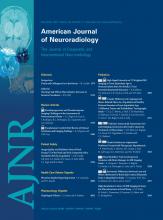Abstract
BACKGROUND AND PURPOSE: Induced hypothermia is thought to work partly by mitigating reperfusion injury in asphyxiated term neonates. The purpose of this study was to assess brain perfusion in the first week of life in these neonates.
MATERIALS AND METHODS: In this prospective cohort study, MR imaging and ASL-PI were used to assess brain perfusion in these neonates. We measured regional CBF values on 1–2 MR images obtained during the first week of life and compared these with values obtained in control term neonates. The same or later MR imaging scans were obtained to define the extent of brain injury.
RESULTS: Eighteen asphyxiated and 4 control term neonates were enrolled; 11 asphyxiated neonates were treated with hypothermia. Those developing brain injury despite being treated with induced hypothermia usually displayed hypoperfusion on DOL 1 and then hyperperfusion on DOL 2–3 in brain areas subsequently exhibiting injury. Asphyxiated neonates not treated with hypothermia who developed brain injury also displayed hyperperfusion on DOL 1–6 in brain areas displaying injury.
CONCLUSIONS: Our data show that ASL-PI may be useful for identifying asphyxiated neonates at risk of developing brain injury, whether or not hypothermia is administered. Because hypothermia for 72 hours may not prevent brain injury when hyperperfusion is found early in the course of neonatal hypoxic-ischemic encephalopathy, such neonates may be candidates for adjustments in their hypothermia therapy or for adjunctive neuroprotective therapies.
ABBREVIATIONS
- ASL
- arterial spin labeling
- aEEG
- amplitude-integrated electroencephalogram
- ASL-PI
- perfusion imaging by arterial spin labeling
- BG
- basal ganglia
- CGM
- cortical gray matter
- DOL
- day of life
- EEG
- electroencephalogram
- FiO2
- fraction of inspired oxygen
- GM
- gray matter
- HI
- hypoxic-ischemic
- HIE
- hypoxic-ischemic encephalopathy
- PASL
- pulsed arterial spin-labeling
- pCO2
- partial pressure of carbon dioxide
- © 2011 by American Journal of Neuroradiology
Indicates open access to non-subscribers at www.ajnr.org












